Mysterious Romania attracts tourists with its history and beauty of natural places. Many of them believe that all the medieval castles of this country are inhabited by vampires. The legends of Count Dracula excite the imagination of travelers. Gothic castles in the forests, their spiers resting on the sky, seem to be a reflection of national myths.
However, most tourists know Romania as a classic European country. There are many majestic buildings in the capital. The rich and diverse culture of the country is represented in ethnographic museums. Dense forests are most often the territory of a nature reserve or national park. The charm of the cozy atmosphere of small towns in Europe can be found in Brasov, Sibiu or Sighisoara. Each historical region of Romania is attractive in its own way and has its own flavor.
What to see in Romania?
The most interesting and beautiful places, photos and a brief description.
- Bran Castle
- Palace of Parliament (Bucharest)
- King Mihai I Park (Bucharest)
- Fortress of Alba Carolina (Alba Iulia)
- Sfatului Square (Brasov)
- Historic center of Sibiu
- Historic center of Sighisoara
- Lipscany Street (Bucharest)
- Botanical Garden in Cluj-Napoca
- Peles Castle (Sinai)
- Corvin Castle (Hunedoara)
- Rasnov Fortress
- Black Church (Brasov)
- Stavropol Church (Bucharest)
- Horezu Monastery
- Churches of the historical region of Moldova
- Romanian Ateneum (Bucharest)
- National Museum of Art of Romania (Bucharest)
- Palace of Culture (Iasi)
- Museum of the Romanian Village (Bucharest)
- ASTRA (Sibiu)
- Merry Cemetery
- Salt mine in the city of Turda
- Southern Carpathians
- Scarisoara cave
- Mud volcanoes in Buzau
- Bucegi Sphinx and Bebele
- Retezat
- Natural Park Iron Gate
- Monument to King Decebalus
- Sarmizegetusa
- Transfagaras Highway
- Gorge Bicaz
- Danube Delta
- Mamaia beach (Constanta)
Bran Castle
Also known as Dracula's castle, as during the campaigns the voivode Vlad Tepes-Dracula often stopped here for the night. It was he who was the prototype of the hero of Stoker's novel. Bran Castle was built in the 14th century as a defensive fortress. Subsequently, two defensive towers were added to it. Long labyrinth corridors lead through the premises of the castle, and from the well there is a passage to the underground rooms.

Address: Bran Castle, Romania, Romania
Phone: +40 268 238 000
Opening hours: 1 April - 30 September: 9:00 - 18:00; 1 October - 31 March: 9:00 - 17:00.
Palace of Parliament (Bucharest)
Architectural monument in the capital of Romania. The magnificent palace is one of the largest buildings with administrative significance in Europe. It currently hosts meetings of the Romanian government. The height of the palace is 86 meters, but it is surprising that it goes another 92 meters deep. The construction of the castle required about 1 million m² of marble, 350 tons of crystal. The interior decoration of the palace has not yet been completed.

Address: Palace of Parliament (Bucharest), Romania, Romania
Phone: +40 21 315 5500
Opening hours: Monday to Friday: 10:00 - 17:00, Saturday: 10:00 - 16:00, Sunday: Closed
King Mihai I Park (Bucharest)
Founded in 1936. It is located next to Place Charles de Gaulle in an area where there were marshes in the past. Most of the park is occupied by Lake Herestrau. The attractions of the park are the royal residence "Elizabeth's Palace" and the Museum of the Romanian Village. Part of the park is occupied by a recreational area designed for recreation of city residents and travelers. In this part of the park there are paths and benches.
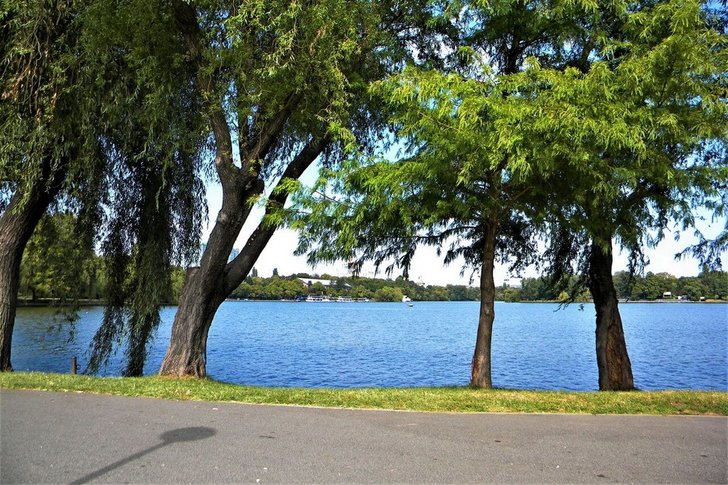
Address: King Mihai I Park (Bucharest), Romania, Romania
Opening hours: 06:00 - 22:00
Fortress of Alba Carolina (Alba Iulia)
An ancient fortress, built in 1715-1738. It is interesting for its unusual heptagonal shape for buildings of this type. Some believe that the architects built it in the form of a star. The fortress was built as a defensive structure during the invasion of the Turks, but it participated in only one battle - against the Hungarians. The walls of the fortress are well preserved, in one of them a hotel was built in the "Middle Ages" style.
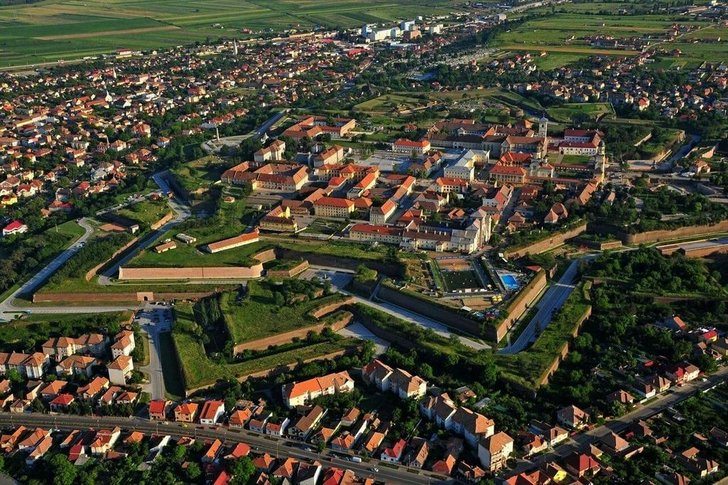
Address: Fortress of Alba Carolina (Alba Iulia), Romania, Romania
Opening hours: 09:00 - 19:00
Sfatului Square (Brasov)
Also called City Council Square. The oldest square in the city of Brasov, a large number of medieval historical buildings and architectural monuments are concentrated on it. Including the interesting building of the town hall of the XV century, which now houses the historical museum. A large number of excursion routes pass through the noisy and crowded square; fairs or mass festivities often take place on it.
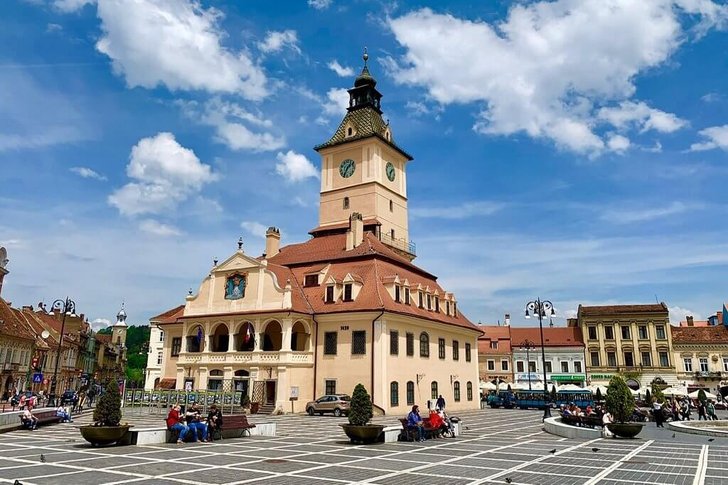
Address: Sfatului Square (Brasov), Romania, Romania
Opening hours: 08:00 - 22:00
Historic center of Sibiu
Sibiu is a city in Transylvania, a historical region of Romania. The center of this city is a contender for protection as a UNESCO site. Conventionally, it is divided into two parts. Architectural monuments are concentrated in the Upper Town; wealthy segments of the population lived there. The lower city will show tourists the life of workshops and artisans. The narrow cozy streets of the center turn into squares, on which, as a rule, a church is located.
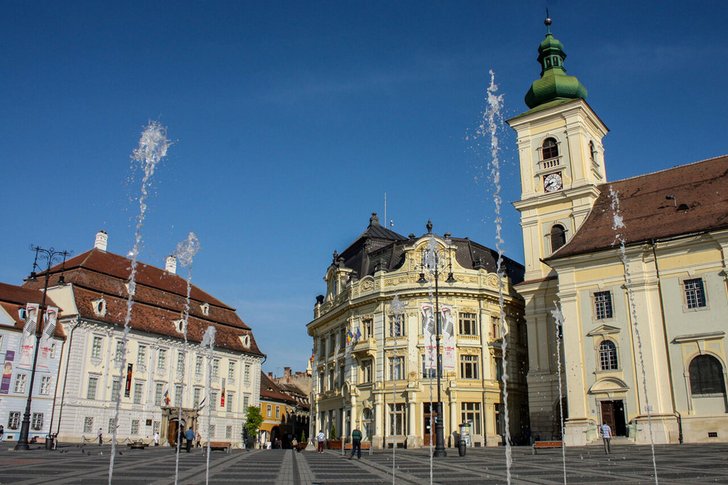
Address: Historic center of Sibiu, Romania, Romania
Opening hours: Always open.
Historic center of Sighisoara
The city itself was founded in the XIII century by settlers from Saxony. They built a fortress on a hill, which later formed one of the most beautiful cities preserved from the Middle Ages in Europe. The historic center of Sighisoara is rightfully included in the UNESCO heritage list. Its symbol is the Clock Tower 64 meters high. It was built at the same time as the fortress. Costumed processions and tournaments are held on the square of the center.
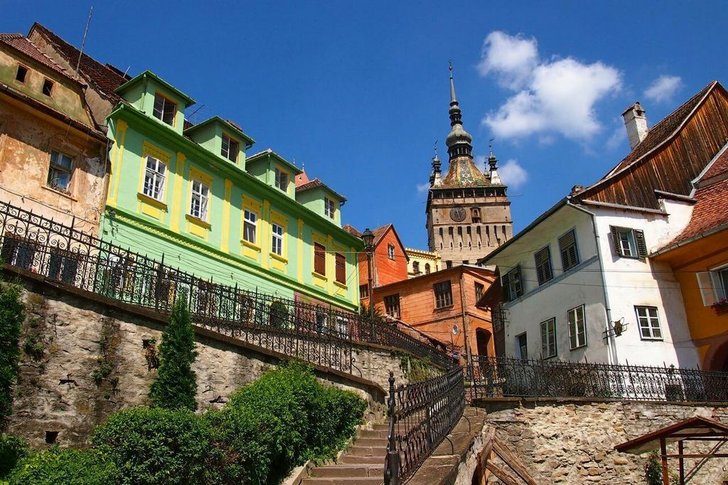
Address: Historic center of Sighisoara, Romania, Romania
Opening hours: 08:00 - 20:00
Lipscany Street (Bucharest)
The street is called the heart of the old city. In the past, fairs and auctions were held on it, and even now there are many different shops on it - souvenir, book, wine, tea. In the evening, bars and restaurants begin to work, and the active nightlife of this street begins. Many buildings in this part of the city were damaged during World War II. And now the most fashionable boutiques of the city are located in the restored buildings.
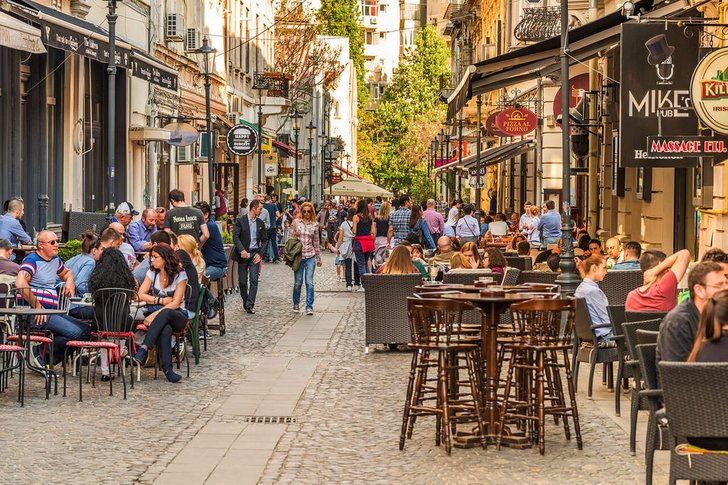
Address: Lipscany Street (Bucharest), Romania, Romania
Opening hours: 09:00 - 22:00
Botanical Garden in Cluj-Napoca
It is the botanical garden of the Babes-Bolyai University. The garden bears the name of the Romanian botanist of this university - Alexander Borza. Research activities are carried out in this popular place among tourists. More than 10,000 plants brought from all over the world grow on 14 hectares of the garden. Some areas are decorated with themed landscapes. A pagoda was built in the Japanese Garden, and ancient Roman artifacts were installed in the Roman Garden.

Address: Botanical Garden in Cluj-Napoca, Romania, Romania
Phone: +40 264 593 147
Opening hours: 8:00 - 20:00
Peles Castle (Sinai)
The ancient castle in the Carpathian region is an architectural monument. After construction in 1914, it was a royal residence. The luxury of the interiors is amazing. Decorations are wall painting, stained-glass windows, carvings. In the park around the palace there is a garden with many sculptures. Currently, the castle houses the Historical Museum. In it you can see a collection of weapons and armor of the Middle Ages, works of art.
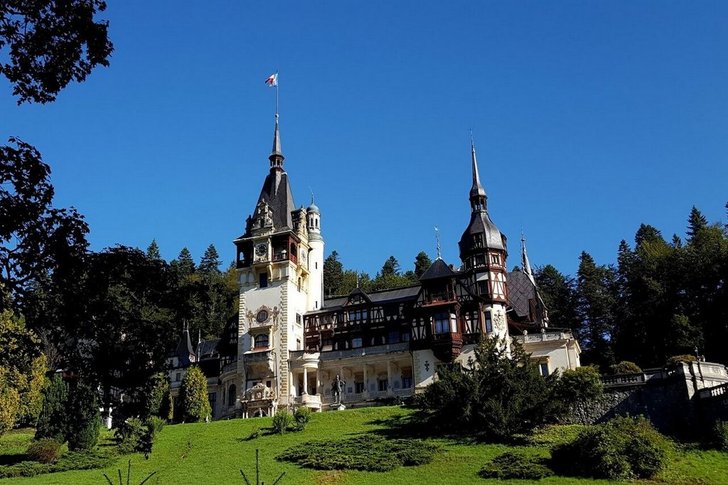
Address: Peles Castle (Sinai), Romania, Romania
Phone: +40 244 310 118
Opening hours: 09:00 - 17:00
Corvin Castle (Hunedoara)
An ancient castle of the Hunyadi family, built in the 15th century on the site of a small fort with a single defensive tower. During its existence, the castle has changed more than 20 owners, each of which rebuilt and completed it to his taste. As a result, the architecture represents different styles from the Renaissance to the Gothic Revival. Now the castle houses a museum. The road to it passes through a gigantic bridge.

Address: Corvin Castle (Hunedoara), Romania, Romania
Phone: +40 254 235 200
Opening hours: 9:00 - 17:00
Rasnov Fortress
Built by the Knights of the Teutonic Order back in 1215. Its main purpose was to protect the local civilian population. When threatened with an attack, the villagers took refuge behind the walls of the citadel, which had everything necessary for life - houses, a school, a chapel. In the middle of the fortress there is a well 146 meters deep. According to legend, Turkish prisoners of war dug it in an attempt to save their lives.
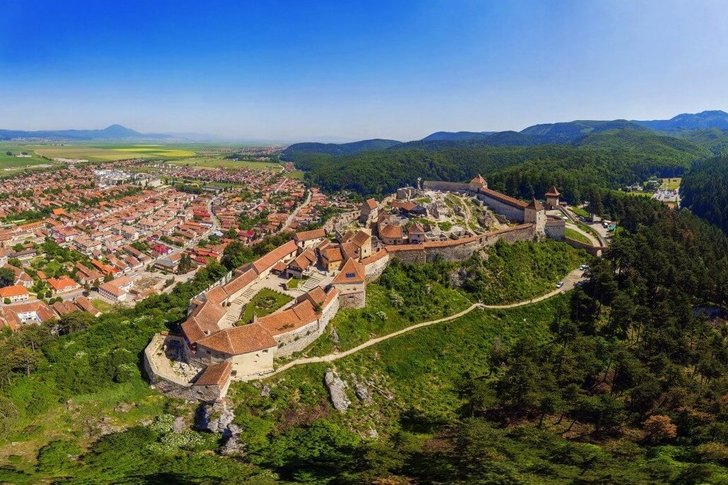
Address: Rasnov Fortress, Romania, Romania
Phone: +40 733 120 226
Opening hours: 08:00 - 18:00
Black Church (Brasov)
Lutheran ancient church, built in the XIV century. Located in Transylvania. The height of this building in the Gothic style is 65 meters. The church got its name after the fire of the Great Turkish War. The fire covered the walls of the church with soot. The temple is active. But tourists are allowed to go inside and see the ancient artful frescoes, sculptures, as well as magnificent carpets that adorn the interior.

Address: Black Church (Brasov), Romania, Romania
Opening hours: Monday-Sunday: 10:00-18:00
Stavropol Church (Bucharest)
A sacred place for many pilgrims. Believers from all over Europe come to the church to see the unique religious artifacts. For example, particles of the relics of the apostles Peter and Andrew. Travelers admire the design of the church. The best traditions of Byzantine and Romanian architecture intertwined in its appearance. The peculiarities of the interior are the exquisite subtlety of the design of frescoes and paintings, as well as the altar.
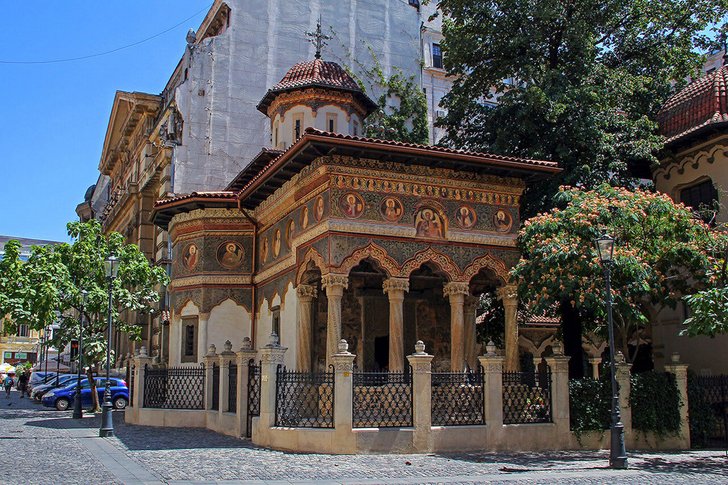
Address: Stavropol Church (Bucharest), Romania, Romania
Opening hours: 09:00 - 17:00
Horezu Monastery
Located in the historical place of Romania - Valahau. Built in 1690. The architecture of the monastery is a magnificent example of the Brynkovyan style, which originated in this area. The internal painting of the church at the monastery was made by the master Konstantin invited from Greece. Many of his drawings have survived to this day. The monastery is protected by UNESCO as an object of world cultural and historical value.
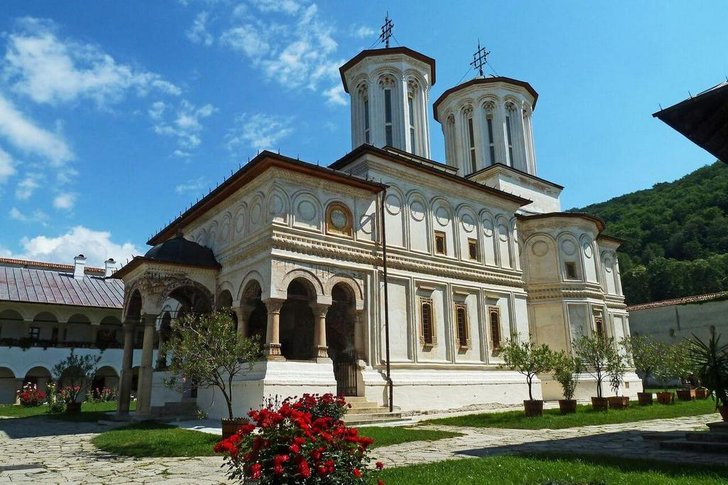
Address: Horezu Monastery, Romania, Romania
Opening hours: 08:00 - 17:00
Churches of the historical region of Moldova
Moldova is a region in the northeast of the country. 8 churches of this area are under the protection of UNESCO. The years of church construction are between 1487 and 1532. Churches differ in different styles of decoration and architecture, they are painted in different colors. Excursion tours to the churches of Moldova are popular with travelers, even those who are not related to religion. One does not need to be an expert to appreciate the architectural and spiritual value of these churches.
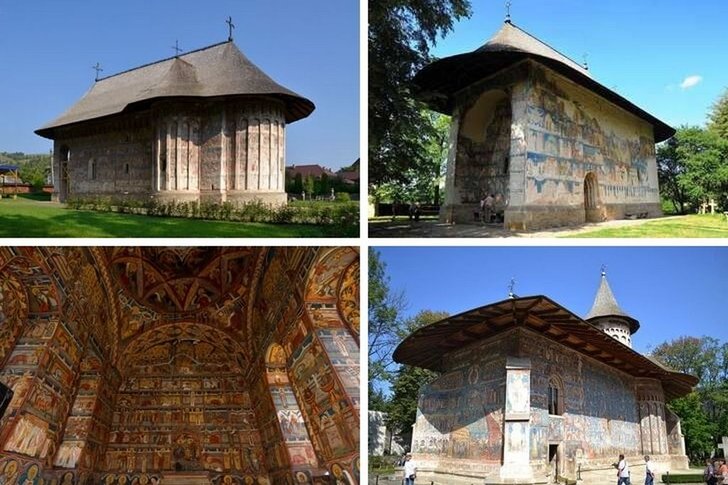
Address: Churches of the historical region of Moldova, Romania, Romania
Opening hours: 09:00 - 18:00
Romanian Ateneum (Bucharest)
A magnificent concert hall in the capital of Romania. Built in 1888 on the initiative of Romanian artists. The Concert Hall is the main venue for the George Enescu Orchestra of the Bucharest Philharmonic. The building was built in the neoclassical style with elements of romanticism. Its architecture contains both columns and a dome with a spire, as well as rich external and internal decor. There is a park around the concert hall.
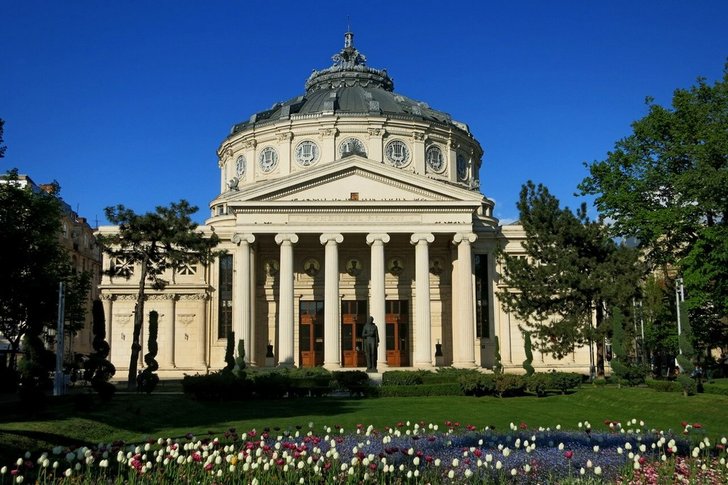
Address: Romanian Ateneum (Bucharest), Romania, Romania
Phone: +40 21 315 6800
Opening hours: 10:00 - 20:00
National Museum of Art of Romania (Bucharest)
It is located in the center of Bucharest and occupies the building of the former royal palace. The museum's exhibitions feature exhibits of various subjects - weapons, coins, books, antique clothes and furniture. Particular attention is paid to art objects. The works of local masters are united in the Gallery of Modern Romanian Art and there is a separate exposition of works by masters of painting and sculpture from abroad.

Address: National Museum of Art of Romania (Bucharest), Romania, Romania
Phone: +40 21 313 30 30
Opening hours: 10:00 - 18:00
Palace of Culture (Iasi)
Under the roof of the Palace of Culture, four museums of the national complex of Moldova and the Center for the Conservation and Restoration of Cultural Heritage are united. 298 rooms of the palace were provided for their needs. The central hall is decorated with mosaics on the floor depicting animals from the Bestiary. The entrance to the Palace of Culture is through the Clock Tower. The building has survived 14 fires and several extensive renovations.
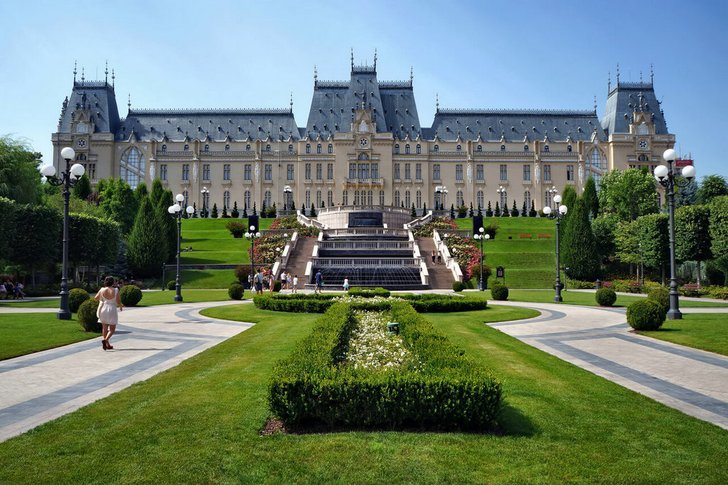
Address: Palace of Culture (Iasi), Romania, Romania
Opening hours: 09:00 - 19:00
Museum of the Romanian Village (Bucharest)
One of the oldest museums of ethnography in the world. Founded in 1936. The open-air museum is located by Lake Herestrau. On its vast territory there are more than 300 buildings brought from different parts of Romania. They are united in 76 complexes. All types of architecture of villages in the country are represented. The oldest buildings of the museum date back to the 15th century. Wooden and water mills are especially interesting for inspection.
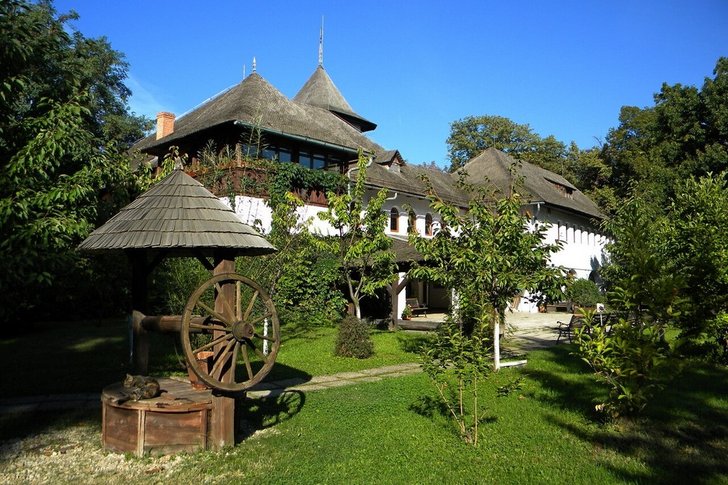
Address: Museum of the Romanian Village (Bucharest), Romania, Romania
Phone: +40 21 317 91 50
Opening hours: Tuesday to Sunday: 9:00 - 17:00
ASTRA (Sibiu)
The theme of the complex is devoted to the Romanian civilization. The open-air exposition is a large platform that presents the life and culture of Romanians. Among the exhibits there are such buildings as farmers' houses, schools, religious buildings. Life is shown clearly - many men and women dressed in national costumes show how the household work is done. It will take about 4 hours to visit this complex.
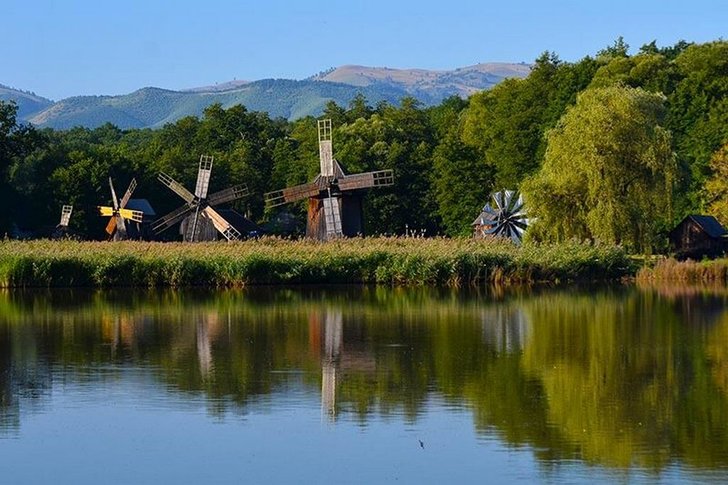
Address: ASTRA (Sibiu), Romania, Romania
Opening hours: 09:00 - 17:00
Merry Cemetery
Located in the village of Sepyntsa. A unique feature is the attitude to the death of local residents, they do not regard the death as a gloomy and tragic event. And the tombstones of the graves at the Merry Cemetery are bright and colorful, with original drawings and poems. Often they depict the life of a deceased person, its most striking episodes. The cemetery is accessible to visitors at any time, thousands of tourists come here every year.
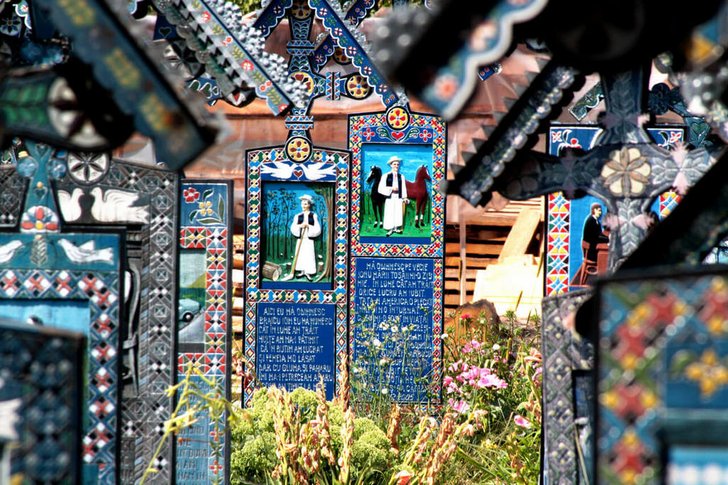
Address: Merry Cemetery, Romania, Romania
Opening hours: 08:00 - 18:00
Salt mine in the city of Turda
Salt springs in this area have been known for a long time. The first mention of them dates back to 1075. In 1992, tourists were allowed inside the mine, and the object quickly gained popularity among travelers. In addition to visiting the salt "palace" - as the cave is often called, a wellness center was founded in it. There are gyms and treatment rooms. Excursions to the underground lake are popular; you can sail on it by boat.

Address: Salt mine in the city of Turda, Romania, Romania
Phone: +40 264 431 508
Opening hours: 09:00 - 17:00
Southern Carpathians
This part of the Carpathian mountain system is called the Transylvanian Alps. The highest mountain is Moldoveanu - 2544 meters. It is located on the Fagaras mountain range. The slopes of the mountains are covered with forests, and at the beginning of summer there is still snow on their peaks, there are large glacial lakes. More accessible for hiking is Mount Tympa near the city of Brasov. The tourist infrastructure is well developed on its slopes.
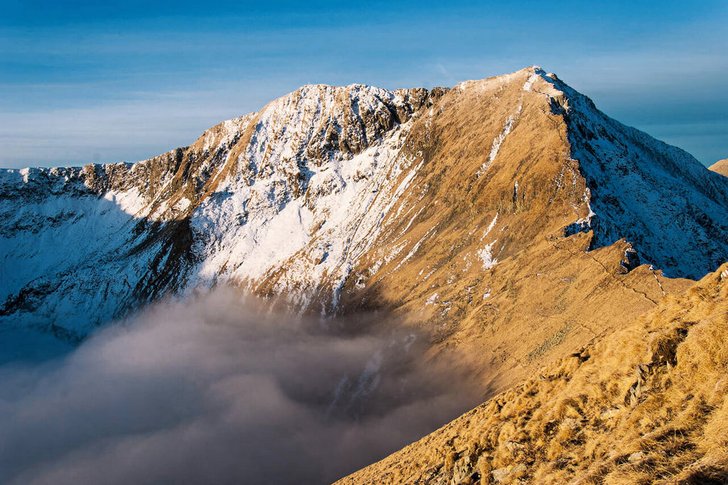
Address: Southern Carpathians, Romania, Romania
Opening hours: 08:00 - 19:00
Scarisoara cave
Large ice cave in the Apuseni mountains. Romanians call it a natural wonder of their country. The cave was formed about 3500 years ago, its exploration began at the beginning of the 20th century. Even now, access is not open everywhere for tourists, as scientists continue to work in it. For visitors, the descents and ascents are equipped with stairs. The total length of the cave is over 700 meters. The temperature in it does not exceed 0 degrees.

Address: Scarisoara cave, Romania, Romania
Opening hours: 09:00 - 17:00
Mud volcanoes in Buzau
They are located on the territory of a natural reserve. Appeared as a result of an earthquake in 1977. 4 craters almost daily erupt from themselves streams of mud containing many chemical elements. Mud flows, drying up, form unusual landscapes with deep cracks, similar to the surface of the moon. For tourists on the territory of the reserve there are several hotels and sites for setting up tents.
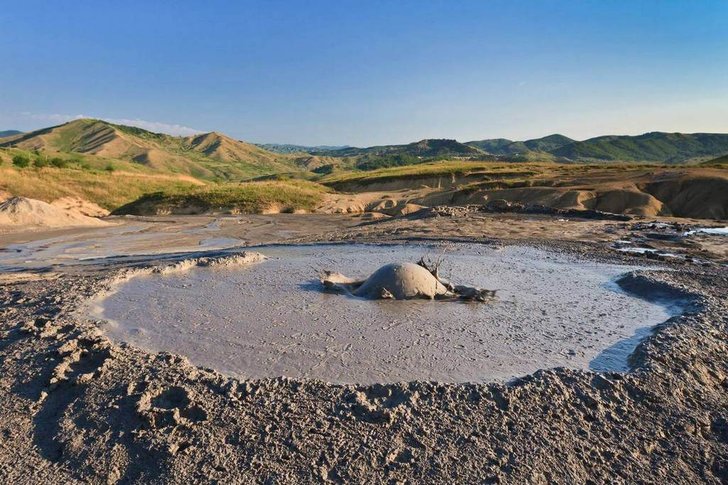
Address: Mud volcanoes in Buzau, Romania, Romania
Opening hours: 09:00 - 17:00
Bucegi Sphinx and Bebele
Rock formations that are included in the list of natural wonders of Romania. Located on the territory of the Buchedgi Natural Park at an altitude of more than 2000 above sea level. The unusual shape of the rocks is due to erosion and wind. The figure of the Sphinx from a certain angle really resembles the figure of a mythological animal. Babel is Romanian for "old women", but it's a little more difficult to see the outlines of old women.
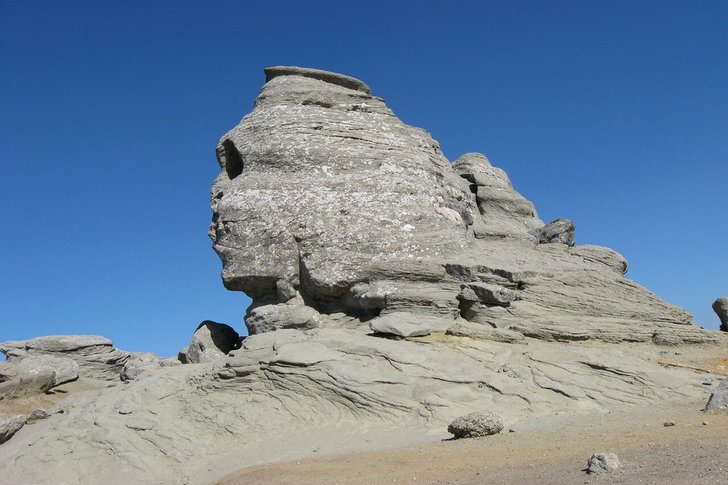
Address: Bucegi Sphinx and Bebele, Romania, Romania
Opening hours: 08:00 - 18:00
Retezat
National park, UNESCO protected area. Located in the mountains, the highest point is Mount Peleaga - 2509 meters. The landscape of the park is diverse - mountain peaks and alpine meadows, rocks and pine groves. Among the rich alpine flora there are many large predators - a wolf, a brown bear, a lynx. Of the birds in the park, 120 species are represented, including golden eagles, eagle owls, and vultures. Reptiles are represented by poisonous vipers.
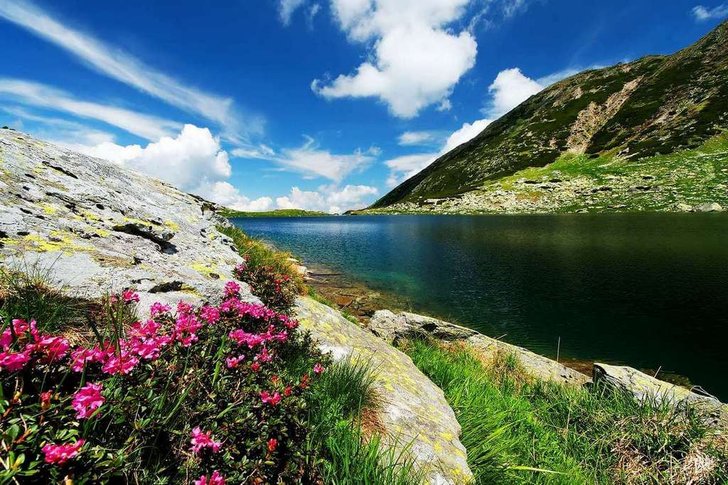
Address: Retezat, Romania, Romania
Opening hours: 09:00 - 17:00
Natural Park "Iron Gate"
The park got its name because of the area in the Danube valley, where the Carpathian and Staro Planina mountains converge. Near this territory are the borders of Romania, Serbia and Montenegro. The fast flow of the Danube in this area is used by the hydropower complex, dams have been built. The territory of the national park is more than 60,000 hectares. More than 1000 different types of plants grow here, including relict ones.
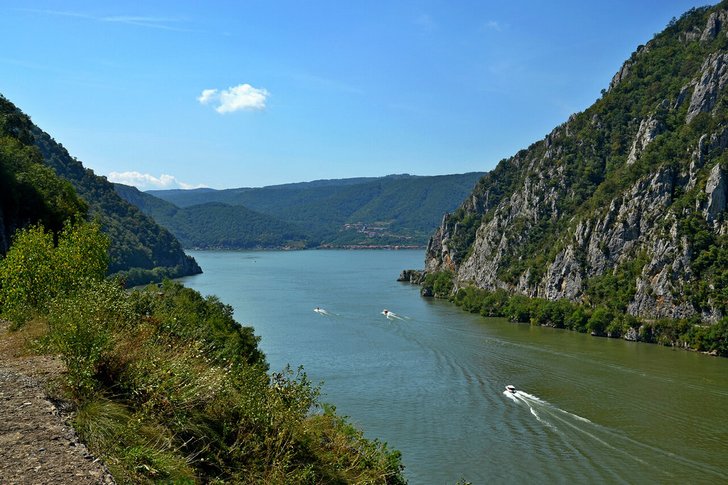
Address: Natural Park Iron Gate, Romania, Romania
Opening hours: 07:00 - 20:00
Monument to King Decebalus
The bas-relief of the king and the great commander was carved into the coastal rock. It is one of the highest of its kind in Europe. The sculpture is 40 meters high and 25 meters wide. 12 sculptors-climbers, as well as auxiliary workers, worked on the creation of the monument. The initiator of the creation of the monument was the historian Joseph Draganu. The creation of the monument took 10 years and cost about a million dollars.
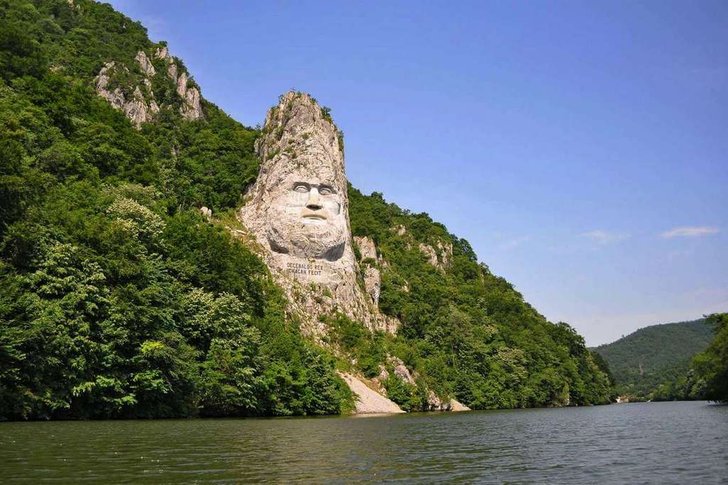
Address: Monument to King Decebalus, Romania, Romania
Opening hours: 08:00 - 20:00
Sarmizegetusa
This place was the residence of the kings of Dacia - an ancient state. It also combined the functions of a military and religious center and was one of the defensive fortresses of King Decebalus. The entire complex of fortresses is a UNESCO heritage site. The fortress is located in the mountains of Transylvania at an altitude of 1200 meters. Sanctuaries are an important part of Sarmizegetuz. But during the raids of the Romans, almost all the temples were destroyed.

Address: Sarmizegetusa, Romania, Romania
Opening hours: 08:00 - 20:00
Transfagaras Highway
Alpine road, laid between Wallachia and Transylvania in 1974. About 6000 tons of dynamite were spent to pave the way in the rocks. It is currently considered one of the most beautiful roads in the world. It leads through beech groves and a waterfall with mountains in the background. Near the highway is the "residence of Vlad Dracula" - the fortress of Poenari. For travelers, the road is open only for a few warm months of the year.
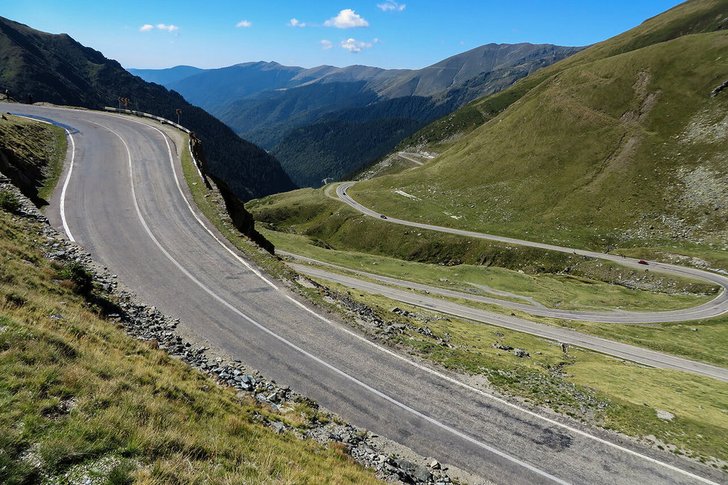
Address: Transfagaras Highway, Romania, Romania
Opening hours: 24/7
Gorge Bicaz
Located in the Eastern Carpathians. Between the high rocks of the gorge flows a mountain river, in which trout is found. In Romania, the Bicaz Gorge is the longest and deepest. Part of the road along it is a serpentine. On one side there are steep cliffs, on the other side there is a sheer cliff. Near the gorge you can see Lake Krasnoe, formed as a result of the blocking of the river bed after a collapse.

Address: Gorge Bicaz, Romania, Romania
Opening hours: 08:00 - 20:00
Danube Delta
It is the second largest in Europe. Most of it is located on the territory of Romania, and it is she who is recognized by UNESCO as a natural heritage site and taken under protection. This area is protected. The landscape of the delta is diverse - there are sand dunes, thickets of reeds and willows, and swamps. Many small rivers and streams flow through the wetlands of the reserve. There are many animals of the Red Book.
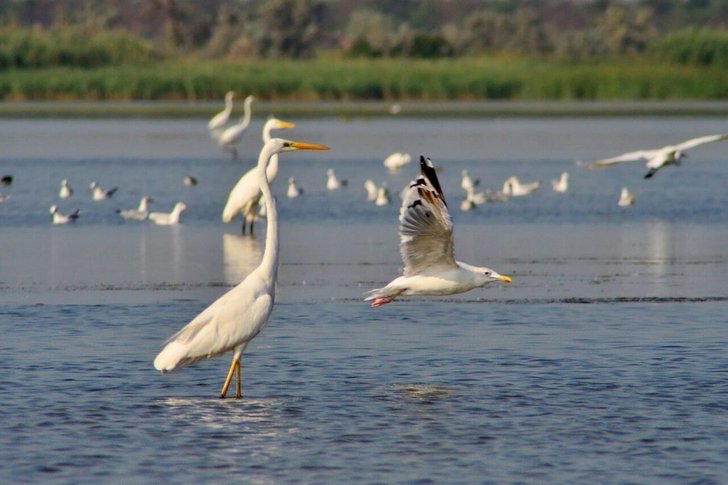
Address: Danube Delta, Romania, Romania
Opening hours: 09:00 - 17:00
Mamaia beach (Constanta)
The Mamaia resort is considered the most expensive and famous resort in Romania. Luxury hotels and health centers have been built near the beach coastal zone. The beach is 8 km long and 200 meters wide. The sand is soft and velvety, golden in color. The beach infrastructure is well developed. There is a rental of jet skis and water skis, mini-football and volleyball courts are equipped. Thanks to the breeze on Mamaia Beach, there is no sweltering heat.

Address: Mamaia beach (Constanta), Romania, Romania
Opening hours: 08:00 - 20:00